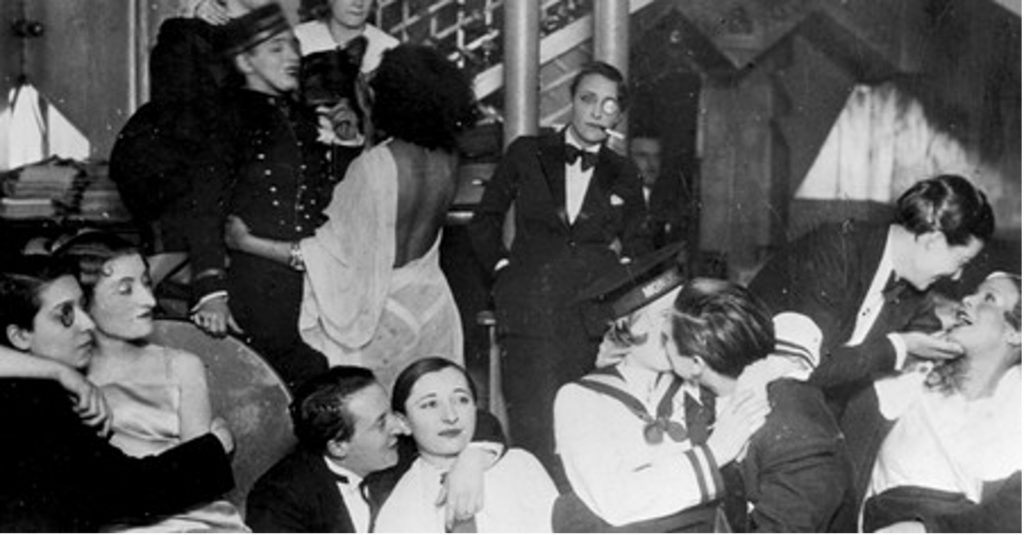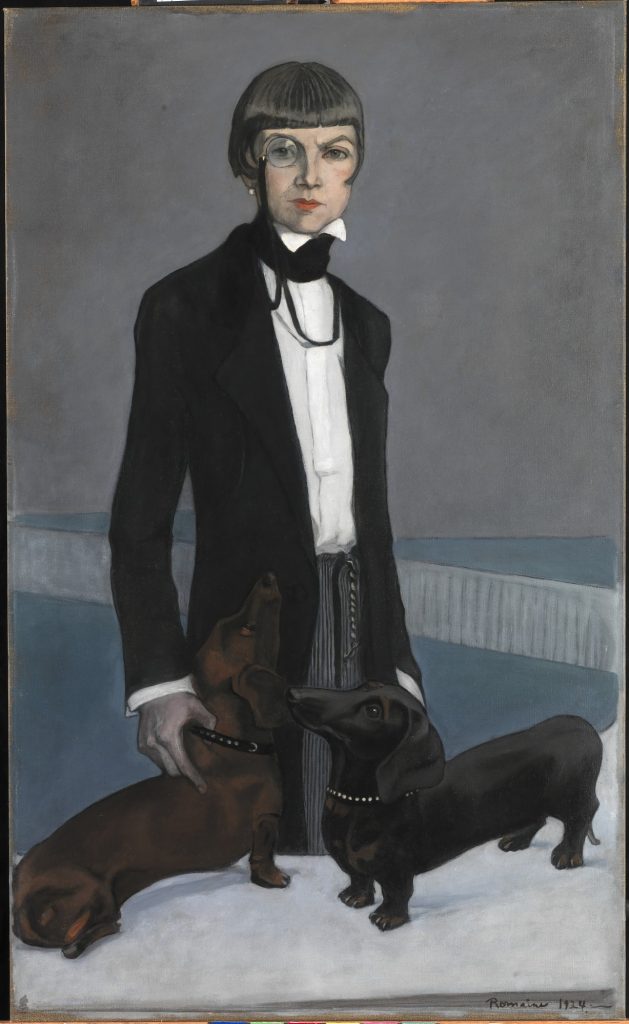
The RAMM’s quizzing glass, also known as a quizzer or monocle, is a singular eyeglass set with a round magnifying lens. This type of quizzing glass was a fashionable accessory among upper-class English gentlemen in the nineteenth century. Its name comes from the practice of ‘quizzing’ people by looking them up and down through the ominous glass clenched firmly between the cheek and brow. As you can imagine, the feeling of being quizzed, studied, or judged by a man wearing a quizzing glass could be highly intimidating, if not unsettling.
Fortunately, this post is not about the quizzing glasses popularised by haughty nineteenth century English gentlemen and their wandering eyes. It has a much more exciting history to tell us about the evolving fashions of queer communities in interwar Paris. In the 1920s and 1930s, Paris gained a reputation for its relative tolerance towards queer life. Word spread abroad that it was a city peopled with like minds and hearts. American and British queers were among those who flocked eagerly to the French capital to start new lives. Within this growing queer climate, many queer establishments and communities emerged in the lively Parisian districts of Montmartre, Montparnasse and Pigalle. Though there were queer bars and clubs all over the city, it was number 60 Boulevard Edgar Quinet in Montparnasse that offered the premier, and predominantly lesbian, nightclub of the era suitably named Le Monocle.
If you were queer, or lesbian, in 1920s and 1930s Paris, looking for love, a short-term fling, or friends, your go-to club would probably be Le Monocle. Those who frequented the club could hustle in through its custom-made monocle-shaped doorway to partake in night-time queer sociability. Aside from alcohol, distinct queer and lesbian looks were also served at Le Monocle, with staff and guests modelling the latest, or a-la-mode, queer fashions. Reading, or ‘quizzing’, someone’s sartorial aesthetic through the filter of thick cigar smoke was a fundamental skill for pursuing hook-ups and potential friends. At Le Monocle, you were free to signal your queer interests simply by locking eyes with your chosen amours or amies.

Though some queer and lesbian guests wore flowing frocks, many embraced the opportunity to follow the club’s loosely-prescribed masculine dress-code set by its owner, Lulu de Montparnasse. In part, dressing in masculine attire signalled increased female autonomy and the so-called ‘new woman’. But wearing handsome tuxes, high collars, bowties, and trousers was also emblematic of diverse gender and sexual identities and expressions emerging in the capital. Other clues to a person’s queerness included a white carnation or sprig of violets pinned to the suit-jacket lapel, a ring on the smallest finger or ‘pinkie’, a cigar in hand, and brilliantined, cropped hair. Of course, at Le Monocle, visitors also wore their very own monocles to mark themselves as part of the queer community. This can be seen in the photograph of a night out at the club above. To wear a monocle in public was one way to state your sexual preference for women and be recognisable within the queer community.
If the Hungarian photographer, Georges Brassai, had not been invited to Le Monocle in 1932 to photograph its patrons, our knowledge of the club, its people, its fashions, and its intimacy would be left to our imaginations.
“Take another look at the central person in the photograph above: do you feel the intensity of being quizzedthrough the lens of their monocle?”
Whether butch or femme, besuited or befrocked, bemonocled or not, or situated somewhere in-between, personal style was a useful marker for identifying, and being identified by, fellow queers at Le Monocle. Beyond the club, however, few queer and lesbian Parisians wore monocles out and about in the city. So few, in fact, that Djuna Barnes’ 1928 satire of Lesbian Paris, the Ladies Almanack, enabled readers to identify the inspiration behind the character Lady Buck-and-Balk from a bare description. This hallmark accessory allowed queers who were ‘in the know’ to identify the character who “sported a Monocle and believed in Spirits” as Una Vincenzo, Lady Troubridge.

Lady Una Troubridge was an upper-class British sculptor, translator of French and Italian literature, and the lover of Radclyffe Hall (author of the 1928 lesbian novel, The Well of Loneliness). Both Troubridge and Hall were among the few queers who visited Paris and donned the monocle as a regular accoutrement – and it did not go unnoticed. In her 1924 portrait of Troubridge pictured above, the Paris-based artist, Romaine Brooks, captured her friend as a powerful self-assured queer. In this painting, Lady Troubridge dominates the scene: her impeccably tailored androgynous clothing conceals her feminine figure, while her short hair, cravat, and our now-familiar friend, the monocle, all signal queer energy.
Once again, it is difficult not to feel the intensity of being caught in the monocle’s intimidating gaze …
